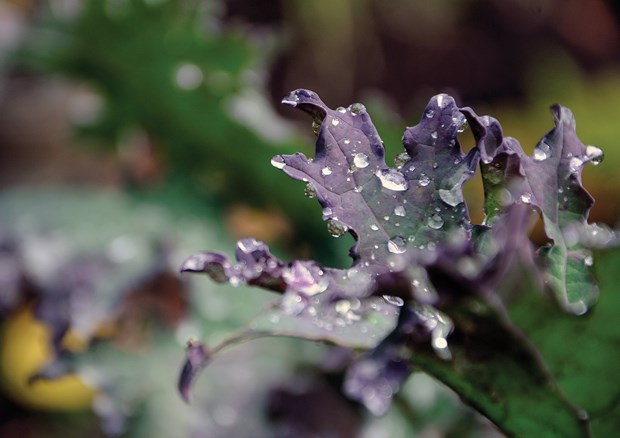It's time to prepare the garden for winter, so here's a small primer for fall ideas and clean up in the garden.
Keeping it green
If you want a healthy garden, feed the soil to feed your plants that nurture your soul. Use the large amounts of biomass that nature drops to the ground, in the form of fallen leaves and plants stalks, as food not as green waste. For example, place fallen leaves on the lawn, use the lawn mower to shred and bag them, and then spread throughout planting beds. Cut up plant stalks into pieces to use as mulch in beds or amongst compost areas. Leave fallen leaves in beds to add colour and to provide food for soil organisms.
Yes I know what you are thinking - it all sounds rather messy. If those ideas offend your sense of cleanliness, I understand. Leave the leaves and layer on a chosen mulch to suit your taste with the added benefit that you don't have to rake up all those leaves and plant stalks and haul them away. And, feeding fallen plant debris to the soil provides food for soil organisms, like fungi and bacteria, which are the true engines of soil fertility. This is a virtue no chemical fertilizer can claim. Ultimately, you save money, there's less work and you're helping the environment.
The myths of fall persist
Read through the hundreds of gardening websites and you'll find some good tips and tricks for fall garden clean up, like lightly thinning bamboo stems before winter to prevent snow damage and using the cut canes for upcycling projects or plant stakes.
You will also find hundreds of uninformed tips from people who have no real training and frankly no business recommending anything. The lesson? Who is the source, what training do they have and what is their purpose? Are they just selling feel-good-ism?
Some of the most erroneous fall gardening tips include:
- Fertilizing plants and lawn in the fall as told by people who want to sell products.
- Pruning trees and shrubs during leaf fall, espoused by people who have no technical training or field experience in the art and science of pruning.
- Applying lime as a rule, not based on soil testing, claimed by people who want to sell lime.
- Digging raw kitchen waste into trenches in the garden as said by hippie gurus who have no comprehension of the negative effects caused by rats, coyotes, bears and raccoons that dig up buried kitchen waste in urban environments.
- Spraying fruit trees with dormant oil and lime sulphur as stated by people who still believe spraying poisonous pesticides will grow beautiful gardens, or they are selling the poison.
All of those ideas will cause more harm than good.
Plant some colour
Fall's optimism finds purchase in the soil of Mother Earth as we work the season of planting. Using the rhythm of the season, the warm soil fills with ideas of pansies, kale, cabbage, cool season vegetables and a few colourful conifers or evergreens to brighten up the garden or containers.
Winter flowering plants may be few, but many plants produce colourful berries, have ornamental bark or an interesting texture to their leaves. Use those types of plants to provide interest in the dark days of winter. Gardening is not just about colour, it's also about texture, structure and creating a sense of place.
Consider the garden's purpose
If your garden is simply a bunch of plants that "live around the house" and nothing more, then perhaps it's time to consider the benefits that a well-designed garden can add to your lifestyle. Think new and forget the status quo.
Front yards are now used for patios, veggie gardens and ground cover plantings as the lawn is dying a slow "chafered" death. Backyards are now used for specialized function-designed outdoor living spaces. And kids only play on lawns for a few years of their lives, so build them something interesting like a tree fort, a pond to catch frogs or a secret garden of their own. Visit friends and family to see what they do in their garden that may work for yours and your lifestyle.
Outdoor living has become increasingly popular over the past decade with no sign of relenting. And remember gardens are not just for adults. Young children love to explore nature and learn how things grow. Consider building raised gardens for kids. Even teenagers, my own as an example, will hang out at home if they have their own space. I built my teens a covered area under our second story deck complete with paving stones, privacy lattice and seating, along with some pots and upcycled art. My teenagers have now claimed the space and use it regularly.
Todd Major is a journeyman horticulturist, garden designer and builder, teacher and organic advocate. [email protected]



